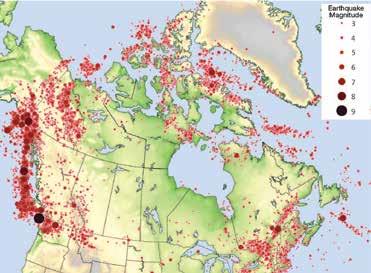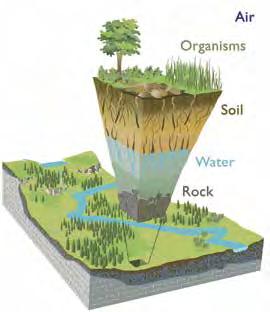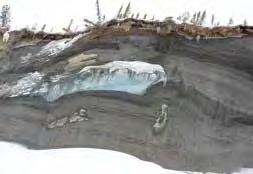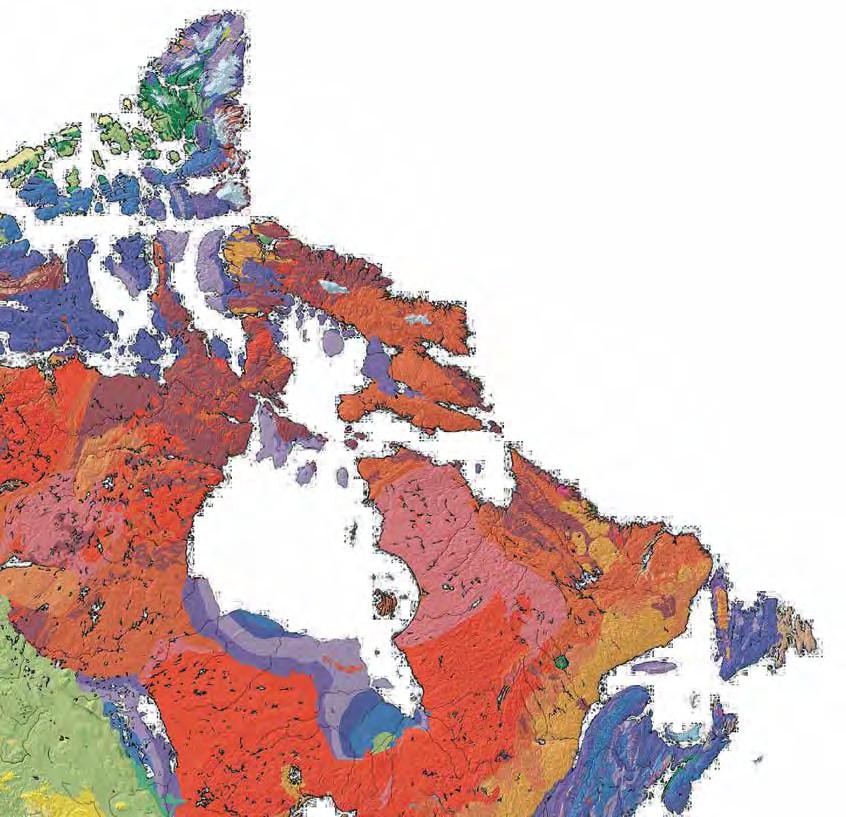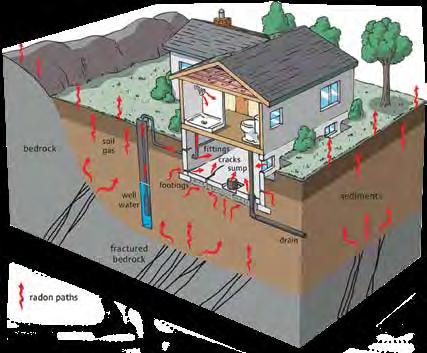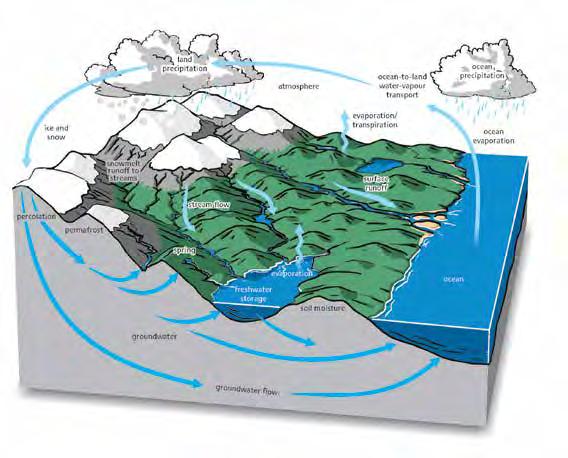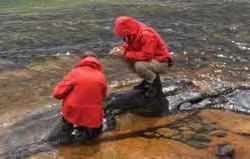
4 minute read
Powering the nation through geoscience
DID YOU KNOW
that Canada has the third largest crude oil reserves and is the second largest uranium producer in the world? Alberta has the world’s largest oil sand deposit. Canada has abundant and diverse energy resources, including crude oil, natural gas, coal, nuclear, and renewable energy, and is recognised as a global leader in energy production. Canadian geoscientists make major contributions to finding, interpreting, and developing these resources.

A LONG TRADITION Canada is an energy powerhouse with a long history of energy production. Coal was first mined in Canada in New Brunswick in 1639. The first commercial oil well in Canada was drilled near Sarnia, Ontario, in 1858. Then, in 1947, Imperial Oil drilled “one more hole” to discover incredible volumes of crude oil near Leduc, Alberta. Uranium was first produced in Canada near Great Bear Lake, Northwest Territories, in the 1930’s.
B. Hayes
Today, Calgary is a global energy hub and an energy research and development centre. It is home to more than 1400 energy businesses, including large multi-national corporations, small exploration companies, and oilfield supply and service companies. The Calgary geoscience community is one of the biggest in Canada, including several thousand experienced and highly trained petroleum geologists, geophysicists, and petrophysicists who work with data collected from within Canada and around the world.
ExxonMobil Canada Properties
British Columbia, Alberta, Saskatchewan, and Manitoba, or the more fragmented offshore Scotian Shelf and Grand Banks sedimentary basins on Canada’s east coast. Geoscientists are involved in all aspects of conventional petroleum discovery and production. They identify reservoir-quality rocks and interpret the location of structural or stratigraphic traps where migrating fluids (e.g., oil) may have accumulated. For any given prospect, geoscientists advise management on the chances of success and estimate the size of the ‘prize’. Once a petroleum resource is discovered, geoscientists are an integral part of the team that works to maximise production from the reservoir.
GEOSCIENTISTS IN THE PETROLEUM INDUSTRIES Canada’s ‘conventional’ petroleum (oil and natural gas) resources (conventional refers to those resources held in porous sedimentary rocks where the petroleum flows naturally and can be pumped to surface), are hosted in vast sedimentary basins – such as the Western Canada Sedimentary Basin that lies underneath parts of Northwest Territories,
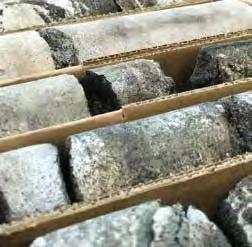
APEGA
A large portion of Canada’s petroleum reserves are contained in the Athabasca oil sands of Alberta and Saskatchewan. Although known for hundreds of years, these deposits have been developed only since the mid 1960’s. Geoscientists provide the appraisals of the resource from field and geophysical surveys and work in multi-disciplinary teams to efficiently and safely recover the petroleum and plan for the reclamation of the land when mining has been completed.
Development of new technologies now allows petroleum to be produced from ‘unconventional’ oil and natural gas
resources. These sources, unlike conventional resources, are hosted by rocks of very low permeability (often shale), which do not allow the petroleum to flow freely. These resources cannot be extracted via a vertical well, but are released by hydraulic fracturing of the host rock and then recovered via horizontal wells. Geoscientists appraise the potential of sedimentary basins to host unconventional petroleum deposits, and work in multidisciplinary teams to bring these resources into production. URANIUM Canada is the second largest global producer of uranium, and nuclear energy fuels about 17% of Canada’s electricity generation. The richest deposits in the world are found in northern Saskatchewan. As these deposits are mostly buried under younger sedimentary rocks, geoscientists discovered them using sophisticated geological studies combined with data from geophysical surveys and shallow drill-holes. Geoscientists also play a critical role as part of government regulatory bodies that set rules for the safe exploration and mining of uranium.
COAL Canada has a long history of coal mining for energy generation and steel-making. About 9.5% of Canada’s current electricity supply comes from coal, mainly in Saskatchewan, Alberta, New Brunswick, and Nova Scotia. The Government of Canada has announced the phasing out of coal-fired electricity by 2030. However, coal will continue to be used for metallurgical processes and geoscientists will be responsible for assessing the quality of coal reserves to ensure it meets the needs of end users.
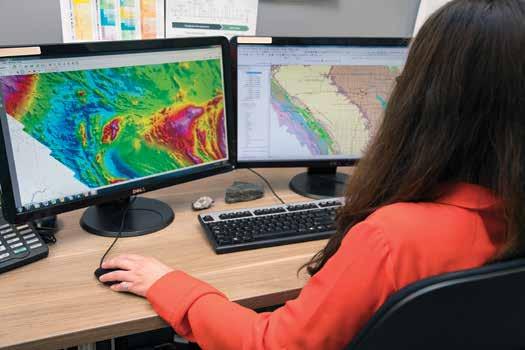
DID YOU KNOW
that Canada mines two types of coal? Thermal coal is burned to produce heat or electricity. Metallurgical coal contains fewer impurities and is a vital ingredient in the manufacture of steel. In 2016, Canadian coal production was about half thermal (mainly used domestically) and half metallurgical (mainly exported).
CANADA’S ENERGY INDUSTRY5,6
• Canada is the sixth largest energy producer, the fifth largest net exporter, and the eighth largest consumer.
• In 2016, Canada’s energy sector directly employed more than 270 000 people and indirectly supported over 600 000 jobs.
• Canada’s energy sector accounts for almost 7% of the Gross Domestic
Product (GDP).
• Oil and natural gas industry listings currently comprise about 10% of the Toronto
Stock Exchange.
• Government revenues from energy were $12.9 billion in 2015.
• Almost $900 million was spent on energy research, development, and deployment by governments in 2015–2016.
• In 2016, Canada produced ° 1.2 million barrels per day of conventional oil, ° 2.4 million barrels per day of oil sands petroleum, ° 15.2 billion cubic feet per day of natural gas.
• In 2016, capital spending in the oil and gas industry was $38 billion.


